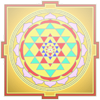
Yoga
A Union Between Body, Mind and Soul
Duration 1 Hour Rs.500.00
Timing - 7:00 am to 8:00 pm
Please contact front office for reservation.
Yog or Yoga, is the physical, mental, and spiritual practices or disciplines which originated in ancient India with a view to attain a state of permanent peace. The term yoga can be derived from either of two roots, yujir yoga (to yoke) or yuj samadhau (to concentrate). The Yoga Sutras of Patańjali defines yoga as "the stilling of the changing states of the mind" Yoga has also been popularly defined as "union with the divine" in other contexts and traditions. Various traditions of yoga are found in Hinduism, Buddhism and Jainism. In Hinduism, yoga is one of the six astika ("orthodox") schools of Hindu philosophy. Yoga is also an important part of Vajrayana and Tibetan Buddhist philosophy.
Pre–philosophical speculations and diverse ascetic practices of first millennium BCE were systematized into a formal philosophy in early centuries CE by the Yoga Sutras of Patanjali. By the turn of the first millennium, hatha yoga emerged from tantra. It along with its many modern variations, is the style that many people associate with the word yoga today. Vajrayana Buddhism, founded by the Indian Mahasiddhas, has a parallel series of asanas and pranayamas, such as ca??ali and yantra yoga.
Indian monks, beginning with Swami Vivekananda, brought yoga to the West in the late 19th century. In the 1980s, yoga became popular as a system of physical exercise across the Western world. This form of yoga is often called Hatha yoga. Many studies have tried to determine the effectiveness of yoga as a complementary intervention for cancer, schizophrenia, asthma and heart disease.
Someone who practices yoga or follows the yoga philosophy with a high level of commitment is called a yogi or yogini.
The ultimate goal of Yoga is moksha (liberation) though the exact definition of what form this takes depends on the philosophical or theological system with which it is conjugated. In Shaiva theology, yoga is used to unite kundalini with Shiva Mahabharata defines the purpose of yoga as the experience of Brahman or Atman pervading all things.
In the specific sense of Patanjali's Yoga Sutras, yoga is defined as citta-v?tti-nirodha? (the cessation of the perturbations of the mind). This is described by Patanjali as the necessary condition for transcending discursive knowledge and to be one with the divinely understood "spirit" ("purusha"): "Absolute freedom occurs when the lucidity of material nature and spirit are in pure equilibrium." In the Yoga Sutras, Patanjali indicates that the ultimate goal of yoga is a state of permanent peace or Kaivalya.
Apart from the spiritual goals, the physical postures of yoga are used to alleviate health problems, reduce stress and make the spine supple in contemporary times. Yoga is also used as a complete exercise program and physical therapy routine.
Pre–philosophical speculations and diverse ascetic practices of first millennium BCE were systematized into a formal philosophy in early centuries CE by the Yoga Sutras of Patanjali. By the turn of the first millennium, hatha yoga emerged from tantra. It along with its many modern variations, is the style that many people associate with the word yoga today. Vajrayana Buddhism, founded by the Indian Mahasiddhas, has a parallel series of asanas and pranayamas, such as ca??ali and yantra yoga.
Indian monks, beginning with Swami Vivekananda, brought yoga to the West in the late 19th century. In the 1980s, yoga became popular as a system of physical exercise across the Western world. This form of yoga is often called Hatha yoga. Many studies have tried to determine the effectiveness of yoga as a complementary intervention for cancer, schizophrenia, asthma and heart disease.
Someone who practices yoga or follows the yoga philosophy with a high level of commitment is called a yogi or yogini.
The ultimate goal of Yoga is moksha (liberation) though the exact definition of what form this takes depends on the philosophical or theological system with which it is conjugated. In Shaiva theology, yoga is used to unite kundalini with Shiva Mahabharata defines the purpose of yoga as the experience of Brahman or Atman pervading all things.
In the specific sense of Patanjali's Yoga Sutras, yoga is defined as citta-v?tti-nirodha? (the cessation of the perturbations of the mind). This is described by Patanjali as the necessary condition for transcending discursive knowledge and to be one with the divinely understood "spirit" ("purusha"): "Absolute freedom occurs when the lucidity of material nature and spirit are in pure equilibrium." In the Yoga Sutras, Patanjali indicates that the ultimate goal of yoga is a state of permanent peace or Kaivalya.
Apart from the spiritual goals, the physical postures of yoga are used to alleviate health problems, reduce stress and make the spine supple in contemporary times. Yoga is also used as a complete exercise program and physical therapy routine.
Kalari Yoga
Kalari Yoga is a mystical tantric form of Yoga which evolved from Vadakkan Sampradayam (Northern Style Kalarippayat, the martial arts form of Kerala) and cannot be separated from Kalarippayat. According to legend its purpose in the practice was to combine the advantages of Hatha Yoga with those of Kalarippayat to enhance the physical and spiritual growth of the Kalari warriors of medieval Kerala.
Hatha Yoga
The word hatha means willful or forceful Hatha yoga refers to a set of physical exercises (known as asanas or postures), and sequences of asanas, designed to align your skin, muscles, and bones. The postures are also designed to open the many channels of the body especially the main channel, the spine so that energy can flow freely.
Duration 1 Hour Rs.500.00
Timing - 7:00 am to 8:00 pm
Please contact front office for reservation.



 Tariff 2025 - 2026
Tariff 2025 - 2026 Getting Here
Getting Here Make a Reservation
Make a Reservation Photo Gallery
Photo Gallery